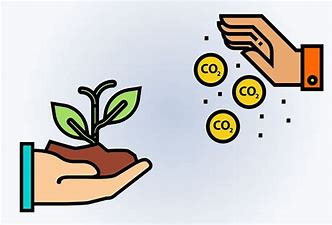Companies demand R$1.73bn for sale of Oi Móvel
09/20/2022
/i.s3.glbimg.com/v1/AUTH_37554604729d4b2f9f3eb9ad8a691345/internal_photos/bs/2021/Z/B/TannLTR0mCZPINCIQcHA/13emp-100-oi-b1-img01.jpg)
The trio of phone carriers claims from Oi the payment of R$1.73 billion due to disagreements found in the contract for the purchase of the asset — Foto: Edilson Dantas/Agência O Globo
Telefônica Brasil, owner of Vivo, TIM S/A and Claro Participações Monday began a dispute with Oi in relation to the closing price adjusted by the purchase of Oi’s mobile business. The trio of phone carriers claims from Oi the payment of R$1.73 billion due to disagreements found in the contract for the purchase of the asset. Oi reported that it has opened a period of 30 days to try to seek an amicable solution to the situation.
Sources familiar with the situation say they believe the case will not be resolved easily and is likely to end up in private arbitration. The sale of the asset was signed in 2020 and closed in a judicial sale in April this year for R$16.5 billion.
The discrepancies have now been identified by the auditing company KPMG, hired by Telefônica, TIM and Claro. In addition, the trio asks for compensation of R$353.27 million.
The total contract adjustment claimed by the telecom companies is R$3.18 billion. Of this total, R$1.44 billion had been retained by the three carriers as a guarantee when the deal was closed. The difference of R$1.73 billion is what they are now asking from Oi.
Every transaction of this type, with ample time between the deal and the closing, has clauses to prove that what was signed is what is being delivered, says another source that follows the case.
Valor found that documents submitted by Oi on the fulfillment of commitments were considered inefficient and confusing, and it is not possible to distinguish what is capital investment in the mobile service from landline phone investment, for example.
Valor has also learned that the result of KPMG’s verification would indicate to the telcos that Oi seems to have “thrown in the towel a little bit,” which would mean that, in a way, it had given up on reaching the goals, because it would have invested less than it had committed, and it didn’t meet the goals of net adds — the difference between incoming and outgoing customers —, it didn’t reach the working capital, it lost market, and it wouldn’t have made the investments assumed.
On the other hand, this price adjustment notification reveals a “move” by Telefônica, TIM and Claro, according to a person who works with the companies. This is because the three phone carriers had offered R$15 billion for Oi Móvel in 2020. As a competitor appeared, Highline, the companies, which did not want to lose the asset, were “forced” to raise to R$16.5 billion, in a binding offer that ended up successful via judicial sale in April this year. But this substantial increase “was never quite accepted by the three companies,” which considered themselves to be the only bidders, the source said. Thus, they expected to “come up with any kind of an excuse” at the right time to reduce the amount offered.
After Oi presents the documentation on the fulfillment of the goals, another period of 30 days for negotiation between the parties will be established. On Monday, in a notice of material fact, Oi rejected KPMG’s analysis, which “presents procedural and technical errors, with mistakes in methodology, criteria, assumptions, and approach,” according to the phone carrier.
After the negotiation deadline, if there is still no agreement on the value of the asset, a single independent auditor will be hired within five days. This auditor will have to do the accounting for the companies within 30 days. In this case, it will probably not be KPMG, which has already been “compromised” by doing the first survey on Oi for the telcos. The decision of the contracted auditor will be binding on all parties involved without the possibility of appealing.
In the last case, if with this single audit the three telcos and Oi do not reach a consensus, the arbitration will be necessary. There are no details yet, but it should be a private arbitration, with an audit company, since the National Telecommunications Agency (Anatel) and the antitrust regulator CADE have nothing to do with this phase of the process, as they told Valor.
“The obligations assumed by the companies, and which are monitored by CADE, are the main ones reviewed in the Agreement on Control of Concentrations (ACC). The private issues between the companies are not part of the scope,” explained the antitrust agency.
Speaking about its legal competence, involving the regulatory features of the operation, Anatel said that “the subject [values eventually due after adjustment] is restricted to the agreement signed by Oi, Claro, TIM and Vivo, applying, in this case, the specific contractual provisions, object of a free agreement between the parties.”
For a source familiar with the documentation process, KPMG asks Oi for a high level of detail, such as, for example, all the invoices (there would be tens of thousands) linked to an investment. In addition, since the deal was closed, there would not have been any sign of questioning to Oi about the data presented to the telecom companies.
Oi, TIM, Claro and KPMG declined to comment. The four telcoms released Monday a statement to the market on the subject.
(Felipe Laurence contributed to this story.)
*By Ivone Santana — São Paulo
Source: Valor International

/i.s3.glbimg.com/v1/AUTH_37554604729d4b2f9f3eb9ad8a691345/internal_photos/bs/2022/i/y/VlS7iPQHKHXul9CLviGA/220519fabiosiccherino-8348.jpg)

/i.s3.glbimg.com/v1/AUTH_37554604729d4b2f9f3eb9ad8a691345/internal_photos/bs/2022/v/9/slf0U9T2Kvgspm6GFiWQ/19emp-100-granado-b10-img01.jpg)

/i.s3.glbimg.com/v1/AUTH_37554604729d4b2f9f3eb9ad8a691345/internal_photos/bs/2022/3/z/SSrfBEQneEEEOPiA9RGw/19fin-100-copom-c1-img01.jpg)
/i.s3.glbimg.com/v1/AUTH_37554604729d4b2f9f3eb9ad8a691345/internal_photos/bs/2022/3/Q/hubcS4QbqJPz892tECWA/fotoaudiencia-ap-282057.jpg)
/i.s3.glbimg.com/v1/AUTH_37554604729d4b2f9f3eb9ad8a691345/internal_photos/bs/2022/g/H/4vyWPCRFKGYVdEAEQn8g/ministerio-da-economia-predio-marcelo-casal-jr-abr.png)

/i.s3.glbimg.com/v1/AUTH_37554604729d4b2f9f3eb9ad8a691345/internal_photos/bs/2022/q/E/jVMikTRxuf68SHeNSZQg/070722embraer-20-20024.jpg)